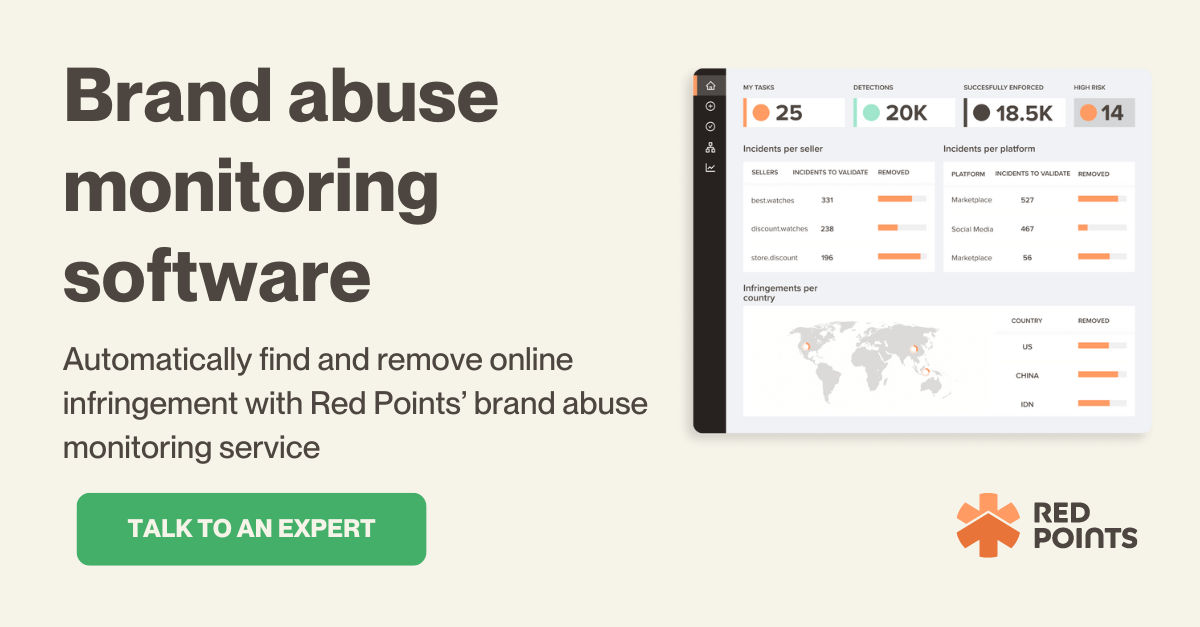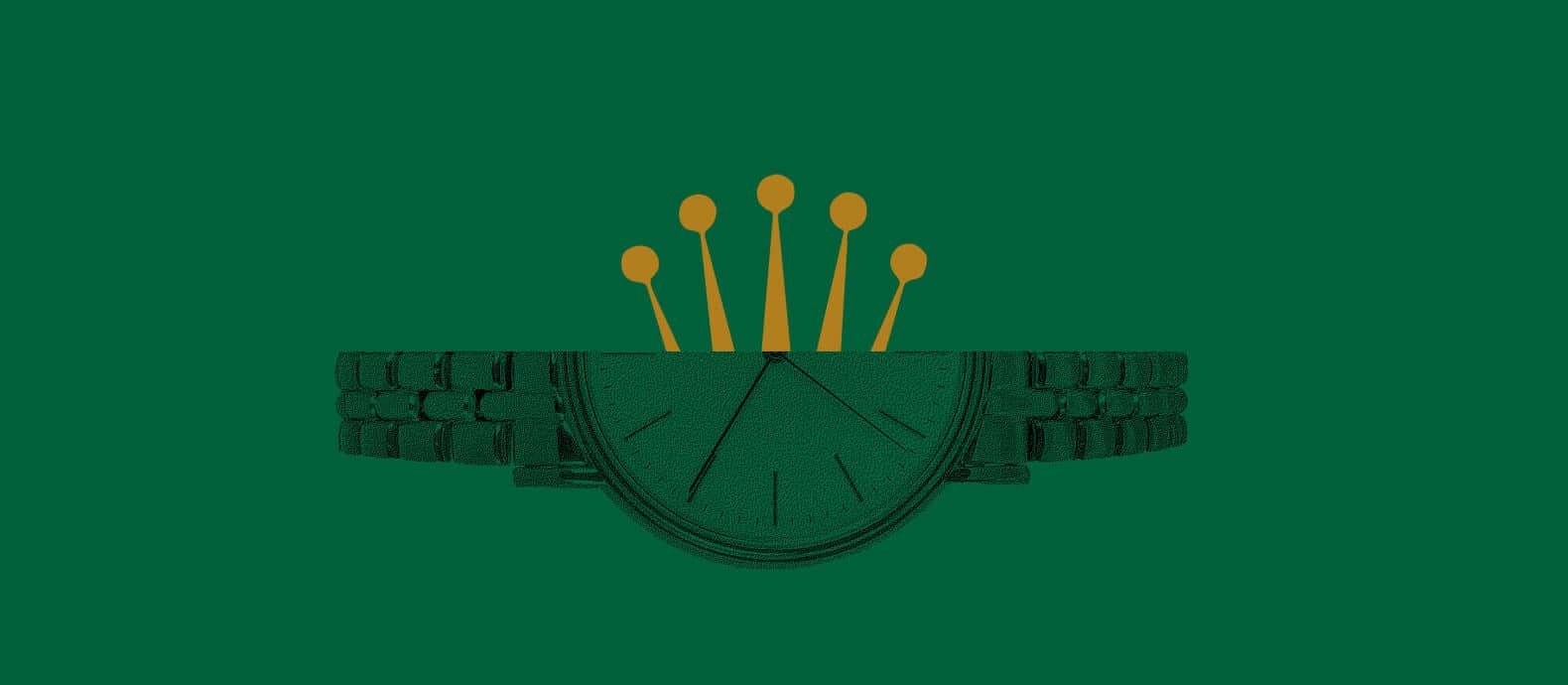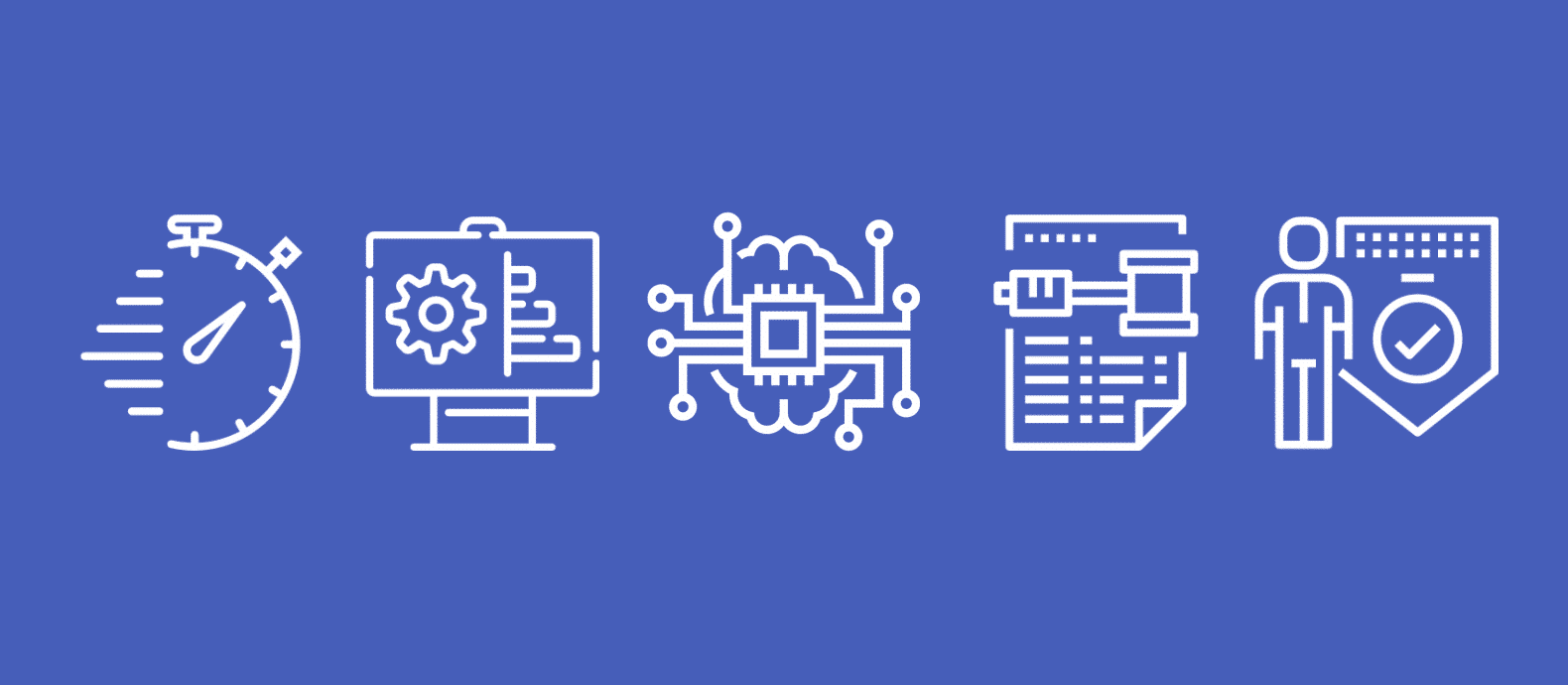Online brand abuse is a modern challenge affecting many businesses in today’s digital market. Large brands like Microsoft and Amazon suffer millions of cyber attacks every year while in 2022 92% of all organizations in the US were victims of phishing attacks.
This prevalent problem has the potential to undermine the good work your business has done to build a reputation and establish strong customer relationships. So, what can you do to prevent online brand abuse?
In this blog, we’ll be exploring online brand abuse and delving into how you can prevent it by highlighting a number of topics, including:
- What is online brand abuse?
- What are some examples of online brand abuse?
- What impact does online brand abuse have on businesses?
- How can businesses prevent online brand abuse?
- How does Red Points’ shut down brand abuse at the source?
What is online brand abuse?
Online brand abuse is about the infringement of a business’s brand by an online attacker. This kind of abuse has many forms. It may involve the unauthorized use of your brand’s logo, name, or other intellectual property. Equally, it could involve the selling of counterfeit products, social media impersonation, or phishing scams.
All of these kinds of online brand abuse have the potential to seriously affect a business’s capacity to operate successfully in the digital world. It is important to be able to spot modern brand abuse like trademark squatting and rogue websites when you see it. This will give your business the best chance of responding quickly and safeguarding your brand’s future.
What are some examples of online brand abuse?
- Logo misuse: phishing scams and fake ads
Online scammers will often take advantage of brands by misusing their logos in phishing scams and fake ads. Scammers will rely on the trust attached to your logo. Then they will prey on this trust by putting your logo on fake ads that may steal consumer information or direct browsers to their own website. They may also misuse your logo to lend the appearance of legitimacy to their phishing scams.
- Trademark infringement: counterfeiting and knockoffs
Digital pirates will abuse your brand by creating and selling counterfeit products. These knockoffs will likely be inferior and cheap. They may also pose a risk to consumers. Ultimately, this kind of abuse will undercut your efforts in the market and impact the trust your consumers place in your products.
- Copyright infringement: using official product images without authorization
Copyright infringement online often occurs when scammers use official product images without authorization on their own product listings and fraudulent content. These infringing actions will dilute any prestige and authenticity you may have built up around your own products.
- Domain impersonation: cybersquatting/typosquatting for fake websites
Online brand abusers will also engage in cybersquatting and typosquatting to take advantage of your business. They will use domain names that are identical or similar to your own and take advantage of consumers that get directed to their website instead of yours. As with other abuse, this will affect your revenue and damage your relationship with customers.
- Social media impersonation
One of the most significant examples of brand abuse occurs on social media. Scammers take advantage of the amount of exposure and interaction on social media by impersonating legitimate business accounts and misleading unwitting users.

What impact does online brand abuse have on businesses?
- Customer confusion
Online brand abuse results in confusion for many customers. Part of this confusion will be created intentionally by scammers. Some of it will be a side effect of their various schemes.
Customers will be confused if they see counterfeit and knock-off versions of your products flooding the market. They will also be confused if they are victims of cybersquatting or social media impersonation. This confusion may lead them to make choices they wouldn’t have in a way that impacts your business.
- Loss of revenue
The economic impact of brand abuse is potentially very significant. With scams like fake ads, knock-offs products, and impersonation your sales will be undercut and drained. As more customers fall victim to these online brand scams you will begin to lose revenue. Ultimately, this will impact your ability to grow your business online and may limit the amount of revenue you could potentially receive in the future.
- Customer loyalty, consumer confidence & trust
Online brand abuse commonly results in damage to your brand’s reputation and your relationship with customers. Scammers seek to disturb the connection you have with customers. If your business is constantly targeted by online brand abusers, consumers will be less confident when interacting with your business online. Customers may then begin to go elsewhere to get their products. They will shop with your brand less frequently and place their trust in other brands.
How can businesses prevent online brand abuse?
- Registering and monitoring Intellectual Property
The first step you can take to prevent online brand abuse is to register your intellectual property(IP). Do you have logos that can be trademarked? Do you depend on any distinctive images or unique content? Check whether you can register your content at the U.S. Copyright Office or the U.S. Patent and Trademark Office.
If you are able to register your IP this will give your business a legal platform to defend your brand, deter scammers and pursue them via legal routes. Once registered you should then monitor your intellectual property to ensure it isn’t being infringed. Registering your IP will make it easier to monitor your brand’s content across social media, marketplaces, and the web.
- Monitor online marketplaces and domains for infringement
Protection against online brand abuse almost always starts with monitoring. Scammers will use online marketplaces and domains to run their schemes. To prevent online brand abuse you should monitor these marketplaces and domains for infringement. If you are proactive in your monitoring you may be able to stop brand abuse before it significantly impacts your business.
- Taking legal action against offenders: Cease and desist letters
You can also protect your brand by taking legal action against any offenders. This can take the form of a cease and desist letter. These letters are a legal tool used to inform individuals that they are potentially infringing IPs and ask them to stop.
A cease and desist letter demonstrates your intention to defend your brand and may deter some of the weaker scammers from targeting your business. This communication can also kickstart the legal process of suing the infringers in civil law. It is a useful tool to prevent online brand abuse and respond to abuse once it has also already happened.
How does Red Points’ shut down brand abuse at the source?
Red Points’ stops brand abuse at the source with our leading Brand Abuse Monitoring Software. We find, track and remove counterfeit listings and sellers with a smart solution that can be tailored to safeguard your brand. We achieve this via three simple and effective steps:
- Monitor and detect
We improve your ability to monitor and detect infringers with our automated bot-powered search. Our brand abuse software scours the web searching through text and images to identify potential infringements.
- Review and validate
Once we have detected potential online brand abusers you have the ability to review and validate the detections we log. You can filter in real time leveraging our image recognition and logic rules. This will enable you to identify high-priority targets and start the process of enforcing them.
- Enforce and takedown
You can request takedowns automatically for validated infringements through our brand protection tool. This will allow us to enforce against online brand abusers and stop their activity at the source. After enforcement, you will then be able to review your progress through our up-to-date reporting process.
What’s next
Online brand abuse is rampant. This means online brand protection must be equally active. Today, in order for your business to thrive you have to be proactive in your approach to any digital piracy and online abuse. It is essential to register your intellectual property. This will help you establish a strong legal base from which to launch your defensive brand strategies.
Then to avoid customer confusion, loss of revenue, and damage to your reputation you should consider partnering with a company that specializes in brand protection. Red Points’ Brand Abuse Monitoring Software is the ideal solution to help find, track, and remove any online brand abusers. We can provide comprehensive protection so that you can ensure your business and customers feel secure online.
To learn more about how Red Points can help you protect your brand from online abuse, request a demo here.






